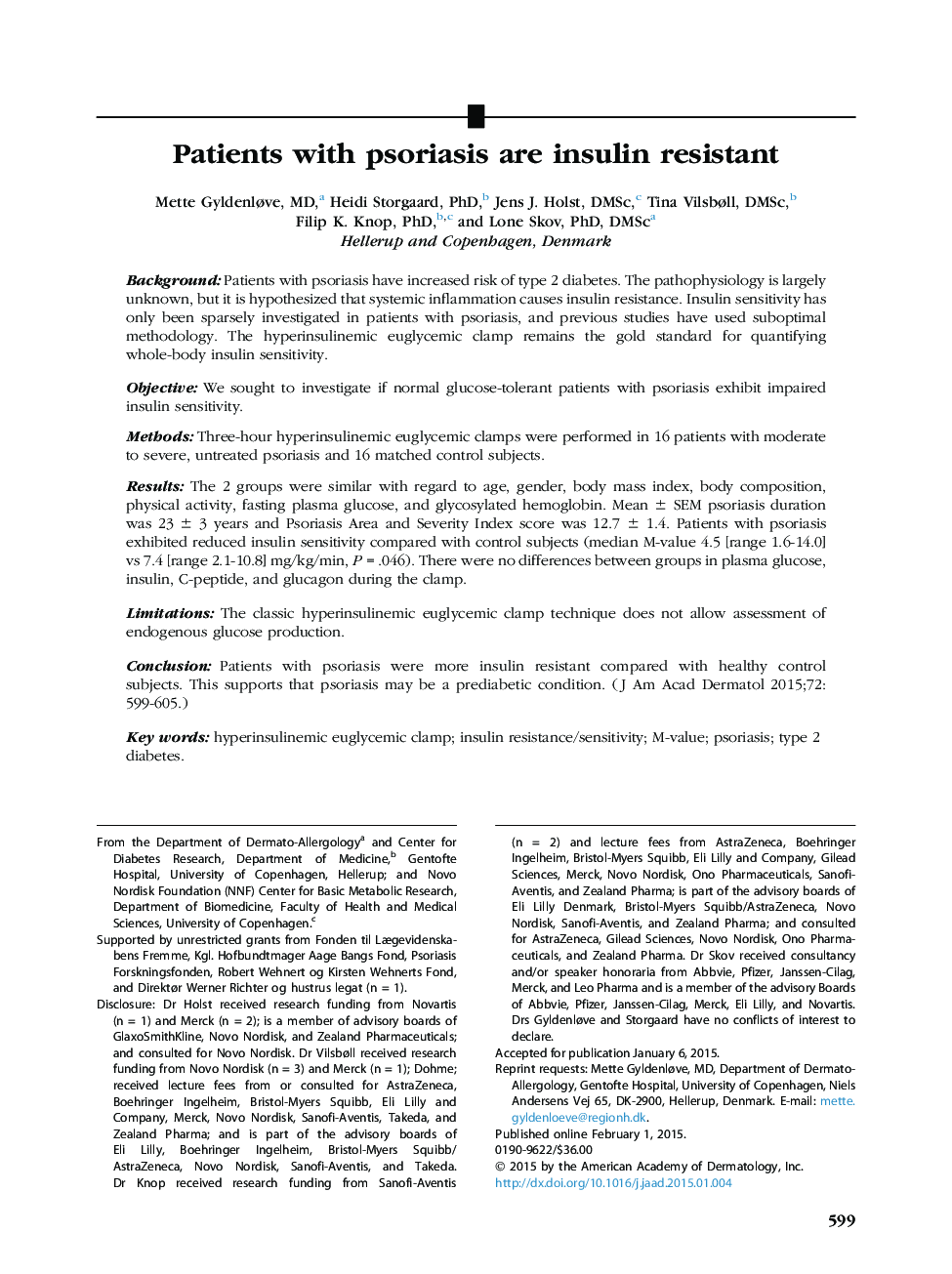| Article ID | Journal | Published Year | Pages | File Type |
|---|---|---|---|---|
| 3204752 | Journal of the American Academy of Dermatology | 2015 | 7 Pages |
BackgroundPatients with psoriasis have increased risk of type 2 diabetes. The pathophysiology is largely unknown, but it is hypothesized that systemic inflammation causes insulin resistance. Insulin sensitivity has only been sparsely investigated in patients with psoriasis, and previous studies have used suboptimal methodology. The hyperinsulinemic euglycemic clamp remains the gold standard for quantifying whole-body insulin sensitivity.ObjectiveWe sought to investigate if normal glucose-tolerant patients with psoriasis exhibit impaired insulin sensitivity.MethodsThree-hour hyperinsulinemic euglycemic clamps were performed in 16 patients with moderate to severe, untreated psoriasis and 16 matched control subjects.ResultsThe 2 groups were similar with regard to age, gender, body mass index, body composition, physical activity, fasting plasma glucose, and glycosylated hemoglobin. Mean ± SEM psoriasis duration was 23 ± 3 years and Psoriasis Area and Severity Index score was 12.7 ± 1.4. Patients with psoriasis exhibited reduced insulin sensitivity compared with control subjects (median M-value 4.5 [range 1.6-14.0] vs 7.4 [range 2.1-10.8] mg/kg/min, P = .046). There were no differences between groups in plasma glucose, insulin, C-peptide, and glucagon during the clamp.LimitationsThe classic hyperinsulinemic euglycemic clamp technique does not allow assessment of endogenous glucose production.ConclusionPatients with psoriasis were more insulin resistant compared with healthy control subjects. This supports that psoriasis may be a prediabetic condition.
